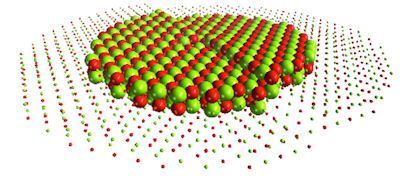Deep Earth
Computational Mineral Physics
Quantifying the physical and transport properties of the minerals that comprise the Earth’s lower mantle is important for interpreting seismic observations and providing constraints for geodynamics models. Research at Leeds uses quantum mechanical based calculations to determine the properties of lower mantle minerals at the extreme temperatures and pressures of the deep Earth. Particular focus is on their elastic properties and thermal conductivity.
Elastic Properties
Seismic studies of the lower mantle provide constraints on its elastic properties. By computing the elastic properties of minerals as a function of temperature, pressure and chemical composition and comparing them to seismic observations inferences can be made about the structure and composition of the Earth.
Of special interest are the elastic properties of iron-rich lower mantle minerals. Seismic studies indicate that in various places at the core mantle boundary there exist regions, tens of kilometers thick, where compressional-wave velocities are depressed by about 5-10 % and shear-wave velocities are depressed by about 10-30 %, relative to normal mantle. These ultra-low velocity zones have most often been attributed to partial melt, but it has recently been suggested that they could be better explained by iron-rich mineral phases.
Thermal Conductivity
The thermal conductivity of the lower mantle is of great geophysical interest, because of its role in shaping the structure and dynamics of the Earth’s interior. During the formation of the Earth, the overlying mantle will have controlled the heat flux from the core and thus played a key role in its thermal evolution. In the present day, it governs the dynamics of the lower mantle and could influence magnetic field generation.
Experimental determination of the thermal conductivity of lower mantle minerals is difficult at lower mantle temperature and pressures. Computer simulations provide an alternative method for determining these quantities.

Model of a screw dislocation in MgO.

